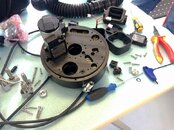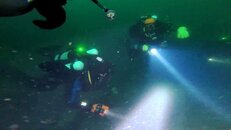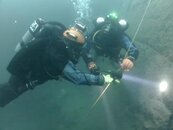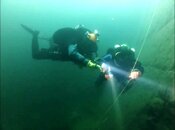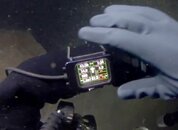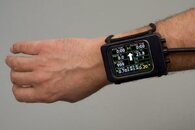descent
Contributor
Jakub at GG has revealed something nice from his secret workshop: the CCR Liberty.
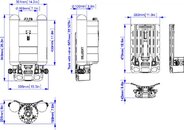
4 oxygen sensors
2 helium sensors – patented
2 methods of ppO₂ measuring
2 independent computers
2 solenoid valves
4 displays
"No single malfunction in the electronic system can cause a breakdown of the whole apparatus."
MOD: 100m
WOB: 1.58 J/l @ 100 m
Weight of the CCR Liberty prepared for diving (without ballast): 36.5 kg (80.5 lbs)
Transport weight (without tanks, without scrubber filling): 23.5 kg (51.8 lbs)
Endurance according to EN 14143:2013 (CO₂ production of 1.6 l/min): 2:48 h
Endurance with CO₂ production of 1 l/min (corresponds to increased effort in cold water and at great depth): 4 h
Endurance with CO₂ production of 0.7 l/min (corresponds to moderate effort in favorable conditions): 6 h
Maximum depth in tests according to EN 14143:2013: 100 m (330 feet)
Depth gauge precision test: 350 m (1,150 feet)
Pressure test of all components: 600 m (1,960 feet)
Deepest dive of which we are aware: 140 m (460 feet)
Longest dive of which we are aware: 9 h (though we consider this to be somewhat unreasonable)

4 oxygen sensors
2 helium sensors – patented
2 methods of ppO₂ measuring
2 independent computers
2 solenoid valves
4 displays
"No single malfunction in the electronic system can cause a breakdown of the whole apparatus."
MOD: 100m
WOB: 1.58 J/l @ 100 m
Weight of the CCR Liberty prepared for diving (without ballast): 36.5 kg (80.5 lbs)
Transport weight (without tanks, without scrubber filling): 23.5 kg (51.8 lbs)
Endurance according to EN 14143:2013 (CO₂ production of 1.6 l/min): 2:48 h
Endurance with CO₂ production of 1 l/min (corresponds to increased effort in cold water and at great depth): 4 h
Endurance with CO₂ production of 0.7 l/min (corresponds to moderate effort in favorable conditions): 6 h
Maximum depth in tests according to EN 14143:2013: 100 m (330 feet)
Depth gauge precision test: 350 m (1,150 feet)
Pressure test of all components: 600 m (1,960 feet)
Deepest dive of which we are aware: 140 m (460 feet)
Longest dive of which we are aware: 9 h (though we consider this to be somewhat unreasonable)




